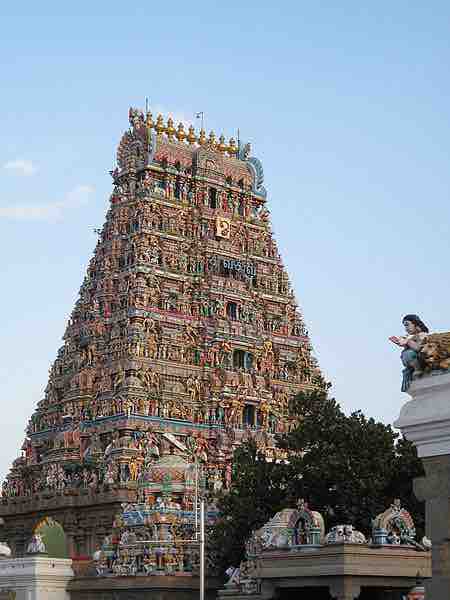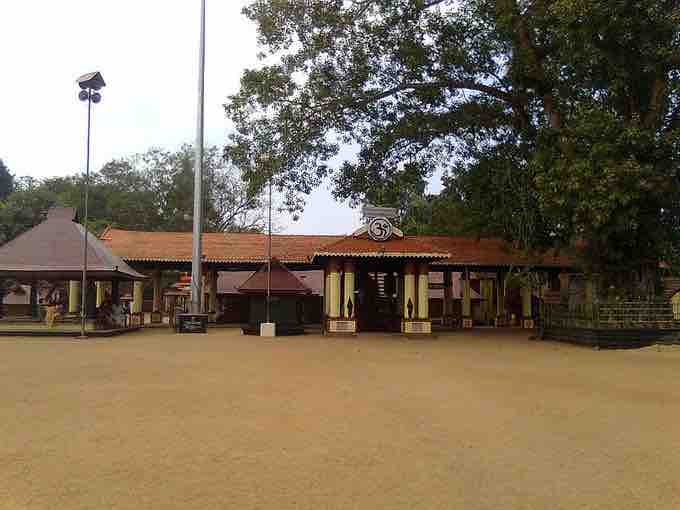Introduction
A Hindu temple is a place of worship for followers of Hinduism. A characteristic of most temples is the presence of murtis (statues) of the Hindu deity to whom the temple is dedicated. They are usually dedicated to one primary deity, the presiding deity, and other deities associated with the main deity. However, some temples are dedicated to several deities, and others are dedicated to murtis in an iconic form. Many temples are in key geographical points, such as on a hilltop or near waterfalls, caves, and rivers. The main architectural styles in India are the Nagara style of North India and the Dravida style of South India.

Kapaleeswarar Temple, Mylapore, Chennai
The tower (gopuram) of the Kapaleeswarar Temple, a typical South Indian temple complex in Chennai, Tamil Nadu.
The Dravidian Style
Dravidian architecture was an architectural idiom that emerged in the Southern part of the Indian subcontinent, or South India. This style of architecture consists primarily of temples with pyramid-shaped towers constructed of sandstone, soapstone, or granite. Dravidian-style temples consist almost invariably of the three following parts, arranged in differing manners according to the age in which they were executed:
- The porches, or mantapas, which always cover and precede the door leading to the cell;
- Gate-pyramids, or gopuras, which are the principal features in the quadrangular enclosures that surround the more notable temples; and
- Pillared halls (chaultris or chawadis), which are used for many purposes and are the invariable accompaniments of these temples.
In addition to these, a South Indian temple usually has a tank, called the kalyani or pushkarni, to be used for sacred purposes or the convenience of the priests. Dwellings for the priesthood are typically attached to this kalyani.
Ritual within these temples tends to be orthodox and elaborate, especially in the large vedic brahminical temples, which follow the pan-Indian Sanskrit agama scriptural traditions. Apart from the main fixed stone deities, processional deities made of panchaloha (an alloy of gold, silver, copper, zinc, and tin) are bathed, dressed, decorated with valuables, and taken out in processions for festivals throughout the year. The richer the temple, the more elaborate the festivals. However, many ancient temples in small villages with great architectural and historical heritage value languish for lack of funds for maintenance.

The Brihadishwara Temple at Sunset in Thanjavur, India
The large vedic brahminical temples of southern India follow the pan-Indian Sanskrit agama scriptural traditions.
Notable Temples in South India
Most of the largest Hindu Temples are found in South India, and specifically in Tamil Nadu. Many large bannabs (grand stone temples) still stand in South India. Famous South Indian temples include the Tirumala Venkateswara Temple in Andhra Pradesh, the Guruvayur temple in Kerala, the Chettikulangara Devi temple in Kerala, among others.

Chettikulangara Devi Temple, Kerala
The Chettikulangara Devi temple is one of the most famous examples of South Indian architecture.